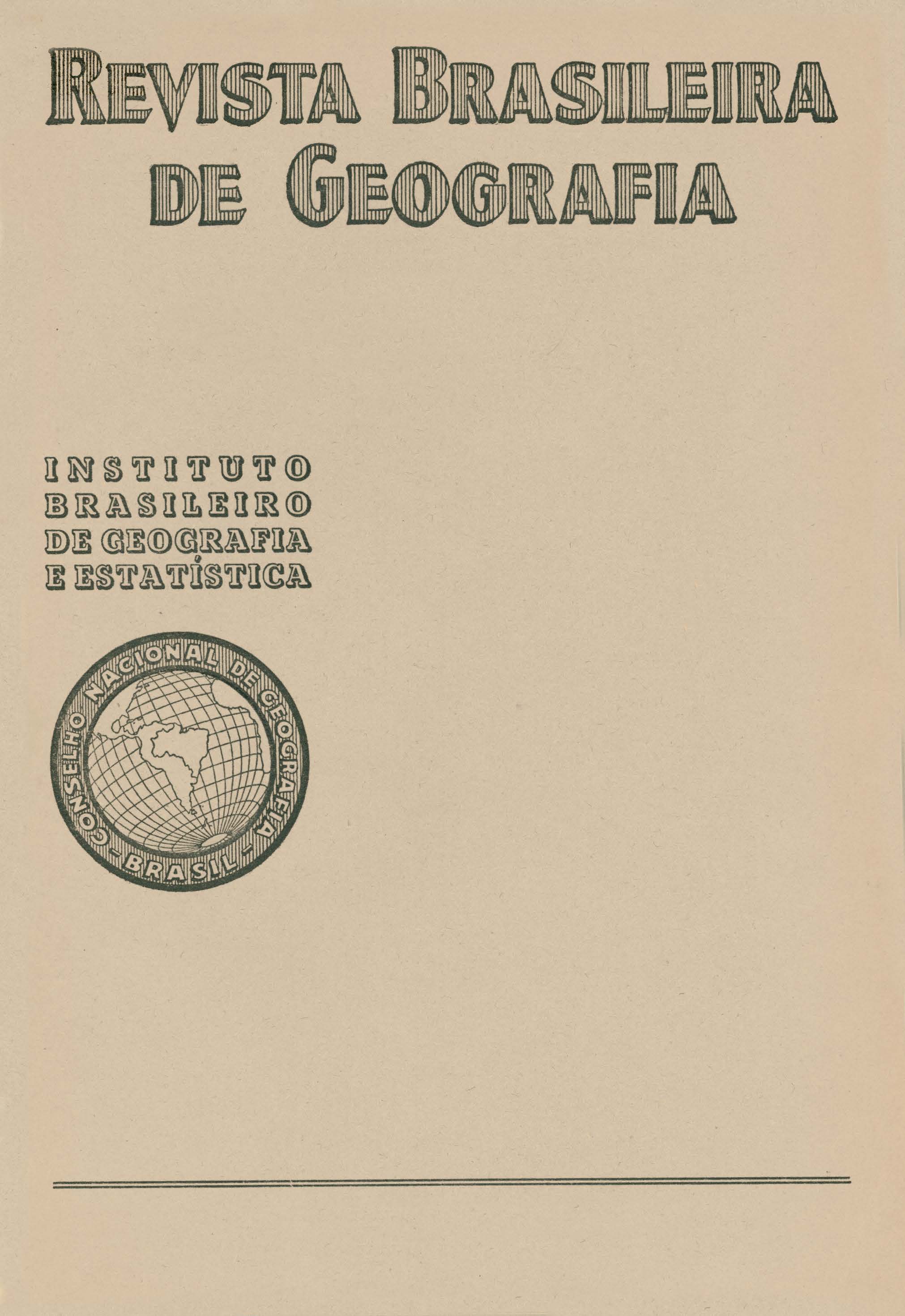Vales tectônicos na planície amazônica?
Palavras-chave:
Amazônia, Geologia, Geologia EstruturalResumo
Examination of charts at the scale of one to a million and aerial photographs, as well as direct observation from the air have led the writer to suspect that, at least in the general vicinity of Manaus, drainage of the "terra-firme" (uplands) in the Amazon plain is, to some extent, structure-controlled. The courses cut by the rivers in the horizontal or sub-horizontal sandstone appear to follow two predominant directions, which are, roughly speaking, NE-SW and NW-SE.
As an attempt to interpret this pattern, the hypothesis is advanced that it is due to fracturing and faulting of the earth's crust. Slickensides, observed in the sedimentary covering, tend to support the idea, which seems to be borne out further by the report of a seventeenth- century Jesuit missionary, who describes a severe earthquake which occurred on the Manaus area and was felt 300 leagues upstream. Assuming that the drainage actually is oriented by faults and fractures, the writer goes on to enquirer into the possible cause of the suggested diastrophism.
It is believed that the problem may be considerably clarified by examining it in the light of knowledge acquired in the Lower Mississippi Valley where exhaustive investigation of the subsurface geology has been carried out. The writer recalls having witnessed the fault which, in April 1943, raft the Recent floodplain near Vaccherie, Louisiana. This surface displacement, actually observed by geologists and geomorphologists of the Mississippi River Commission and of Louisiana State University, focused attention upon the relationship between faulting and the drainage pattern of the valley. Subsequent investigation resulted in the recognition of an extensive fracture pattern. This appears to be directly related to the stresses set up in the earth's crust by down warping at the delta (under the thick masses of sediments accumulating there) and flow of sub crustal material. With reference to this, the writer alludes to Daubrée's well known experiment, by which a piece of glass, ruptured by torsion, shatters into a fracture pattern similar to that observed in the Lower Mississippi Valley (and, apparently, also in the Amazon Valley). Due caution must, of course, be exercised in considering such results of experimental geology.
After these points are discussed, the writer inquires whether the drainage pattern near Manaus can be explained by a deformation of the earth's crust caused by down warping of a more or less contiguous area. Is there any accumulation of sediments in the valley large enough to cause sub crustal flow? In order to show that the earth's crust is liable to give way under a relatively small added load, the writer cites the case of Lake Mead (U.S.A.) where the accumulation of water above Boulder Dam caused, not only earth tremors, but a down warping of more than 12 em. It thus becomes apparent that, at more than one point in the Amazon plain, thickness o f the sediments would be sufficient to overload the earth' s crust and cause subsidence. The writer indicates some of the areas where geophysical prospection has shown an appreciable sedimentary fill. The Marajó Island basin is considered first. This sedimentary pile, at the mouth of the Amazon, is estimated to be at least 120 km broad, 500 km long and 3 000 meters deep. An oil well, which is being drilled in the basin, had been driven through 2 230 meters of apparently youthful sediments by December 1950.
Some objections which might be raised against the suggested relation between the Marajó and Manaus structures are reviewed. The writer recalls that, whereas it is true that the distance between the two areas is more than 1 000 km, in the Mississippi Valley tectonic repercussion of the subsiding delta may be observed at a distance of the order of 900 km. That the sediments which fill the Amazon Valley are divided by a buried ridge of basement complex into two separate units (as opposed to the Mississippi deposits, which become progressively thicker from Cairo, III. to the Gulf of Mexico) also does not appear to invalidate the hypothesis: adjustments caused by subsidence are not "propagated" through the veneering sedimentary strata, but rather take place at great depth, below the crust.
Next, the writer considers other areas which might perhaps be responsible for the tectonics under consideration. This discussion is based on the provisional subsurface map organized by the Conselho Nacional do Petróleo on the basis of geophysical data just now gathered by the refraction method utilized during this year's (1950) campaign. As the age of the sediments which fill these basins - one, very close to Manaus, seems to be 2 500 m deep - has not yet been determined, it is impossible to state that their accumulation actually could have caused the deformation of the young deposits in which the tectonically-controlled valleys are believed to exist. An interpretation of the geophysical data suggests the existence of a major fault in the basement, not far from Manaus.
The finding of other thick bodies of sedimentary rock in the valley would not necessarily invalidate the hypothesis formulated in the present paper. Nor would it be destroyed if the same orientation here indicated should be found in the structure of other regions in Brazil: this could merely signify that the overloading set off tectonism along existing zones of weakness in the crust below the younger beds which now level the Amazon Plain.






